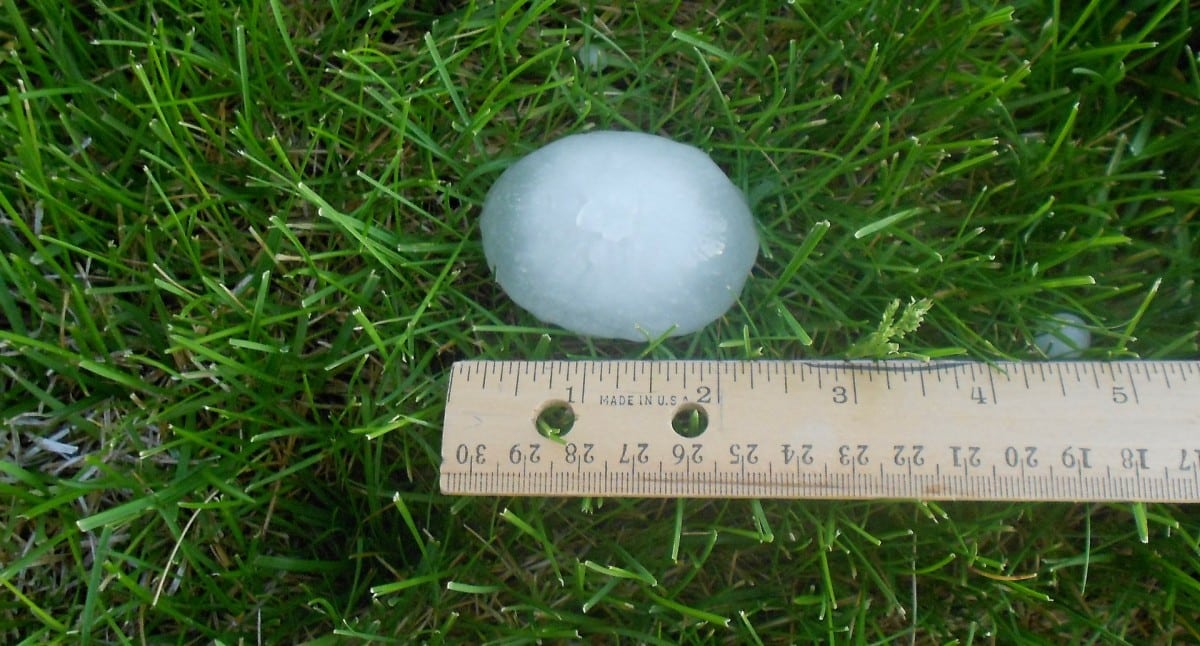
Every year, hailstorms cause major damage to agriculture and the economy in general. The aim of hailstorm research is to provide data that can be used for damage prevention. Hails events are documented in order to provide a forecast model that is constantly being improved upon. The more hail events that are documented, the better that this will be able to be achieved. Now an app is about to turn citizens into researchers too. They will be able to report hail events easily, quickly and correctly.
Climate change is also reflected in the intensity of hailstorms: Recently, tennis-ball sized hailstones pounded down from the sky in southeastern Austria. There are also shifts in time-frames: Hail research is based on the assumption that the thunderstorm season lasts from May to September. The first thunderstorms already started in April this year. Particularly intensive hailstorms were recorded in May. With a few exceptions, the hail defense planes were in daily use. This new situation also poses new challenges for research into hail.
Intensification of data collection
“The more information we have, the more promising the development of new instruments for hail control will be,” explains Helmut Paulitsch, from the Institute of Microwave and Photonic Engineering at the Graz University of Technology. He and his team have already initiated the Hedi platform (Hail event Data Interface) in the spring of 2018, a project for the collection of hail data with help from volunteers located in the region of Styria. Local volunteer researchers will be able to use the form to report information on the time, type and duration of the event, size of the hailstones and damage caused.
Volunteer researchers
An app has now been developed with the aim of launching and advancing the project throughout Austria. The data is transmitted via SSL encryption, and afterwards a validation check is included in forecast models. The reported hail events for all districts in the federal states are able to be be viewed on the HeDi website on the Open Street Map.
Furthermore, informational meet-ups will be held at the Graz University of Technology from autumn 2019 onward. These are intended to provide volunteer researchers with an insight into research and an opportunity for face-to-face exchanges with scientists.
Alpine region is full of lightning activity
Institute of Microwave and Photonic Engineering at Graz University of Technology has been conducting lightning research for more than two decades. This is an obvious development as the Alpine region is the most lightning-active region in Europe. The stormy period from May to September is when researchers collect data. The data provides information on the characteristics of regional lightning strikes. A detailed data analysis and its integration into models for improved prediction of lightning strikes takes place at the end of the season.
Mobile lightning measurement system
At present, doctoral student Lukas Schwalt is on the road equipped with a mobile lightning measuring system developed and optimized by the institute. This consists of an antenna panel for measuring the electric field and a high-speed camera. The latter allows for a precise analysis of the lightning at a rate of 2000 frames per second. Finally, a antenna array was added to the system so that the magnetic field of the atmospheric discharges can be measured.
Due to the close contact with the meteorologists of the Central Institute for Meteorology and Geodynamics (ZAMG), Schwalt is able to be on site during some of the most promising thunderstorms in the southern Alps and carry out measurements. They travel between nineteen selected sites that meet the requirements for successful measurements of the electrical, meteorological and physical effects of lightning strikes.
Local access
The mobile lightning measuring system is seen as a complement to an extensive pan-European lightning location system, where eight permanent lightning location sensors are installed in Austria already. Research partner ALDIS (Austrian Lightning Detection and Information System), ÖVE Service GmbH operates these systems. The mobile lightning measuring system covers a radius of twenty to forty kilometers and forms a local standard reference. It enables verification of the reliability of the lightning location measuring sensors which are used throughout Austria.
How hail is created
Hail occurs when water droplets within a cloud enter extremely cold areas as a result of updrafts. This leads to the formation of hailstones starting from crystallization of the nuclei. If there are only a few of these nuclei in clouds, the hailstones are able to grow rapidly. They fall to the earth as hailstones as soon as they are no longer carried by the updrafts.
Software for preventing hail
Helmut Paulitsch is researching the formation of hail using the perspective of weather radar technology, which enables large-scale recording of precipitation events. He has already developed two software programs together with his team:
- WIIS visualizes weather radar data;
- HAILSYS analyses weather data and assists in assessing the probability of hail in the thunderstorm cell.
These two programs allow the pilots from the hail defense system to be guided to critical thunderstorm cells. Their task is to expose the thunderstorm cells to a silver iodide acetone solution. The solution acts as a crystallization nucleus and leads to an elevated formation of hailstones. This ensures that they will remain smaller resulting in less damage on impact.
Pilot instructions
The HAILSYS hail analysis software program is based on meteorological data, 2D and 3D weather radar data as well as aircraft positions and agricultural damage information. The formation of hail in contrast to raindrops is especially clearly visible in the weather radar scans.
The 2D environmental scans of the anti-hail radar are updated every forty seconds and enable both programs to calculate the direction of their movement and the dimensions of the thunderstorm cells. This data is used to direct the pilots of the hail defense system.
Also interesting:
A single app could stop the spread of Ragweed
Butterflies as a way to measure biodiversity – and what we see is bad news for humanity
